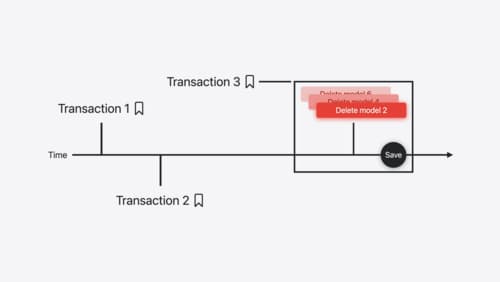What is the best practise for database structure for iOS 18, Swift 6 and after wwdc 2024?
Asked on 2024-09-20
1 search
To structure a database for iOS 18 and Swift 6, as discussed at WWDC 2024, you should consider using the Swift Data framework. Here are some best practices and features to consider:
-
Modeling with Macros: Use the model macro to define your schema within Swift classes. This allows you to specify behaviors on properties and describe relationships between models.
-
Indexing and Unique Constraints: Utilize the new index macro to make queries more efficient by indicating which properties are commonly queried together. The unique macro helps ensure that a set of properties does not have duplicate entries, which is crucial for maintaining data integrity.
-
Custom Data Stores: Swift Data allows for the creation of custom data stores, enabling you to use alternative backends like SQLite, remote web services, or JSON files. This flexibility allows you to choose the best storage solution for your app's needs.
-
History Tracking: Implement history tracking to keep track of all changes in your datastore. This is useful for syncing local changes with remote services and for auditing purposes.
-
Performance Optimization: Use the new expression macro to optimize queries with complex filters, improving the performance of data retrieval operations.
For more detailed information, you can refer to the sessions from WWDC 2024:
- Platforms State of the Union (40:10) for an overview of Swift Data's capabilities.
- What’s new in SwiftData (11:56) for details on the index macro and other new features.
- Create a custom data store with SwiftData (05:40) for insights on implementing custom data stores.
These sessions provide comprehensive guidance on leveraging Swift Data for efficient and scalable database management in your iOS applications.

Platforms State of the Union
Discover the newest advancements on Apple platforms.

Track model changes with SwiftData history
Reveal the history of your model’s changes with SwiftData! Use the history API to understand when data store changes occurred, and learn how to use this information to build features like remote server sync and out-of-process change handing in your app. We’ll also cover how you can build support for the history API into a custom data store.

What’s new in SwiftData
SwiftData makes it easy to add persistence to your app with its expressive, declarative API. Learn about refinements to SwiftData, including compound uniqueness constraints, faster queries with #Index, queries in Xcode previews, and rich predicate expressions. Join us to explore how you can use all of these features to express richer models and improve performance in your app. To discover how to build a custom data store or use the history API in SwiftData, watch “Create a custom data store with SwiftData” and “Track model changes with SwiftData history”.
